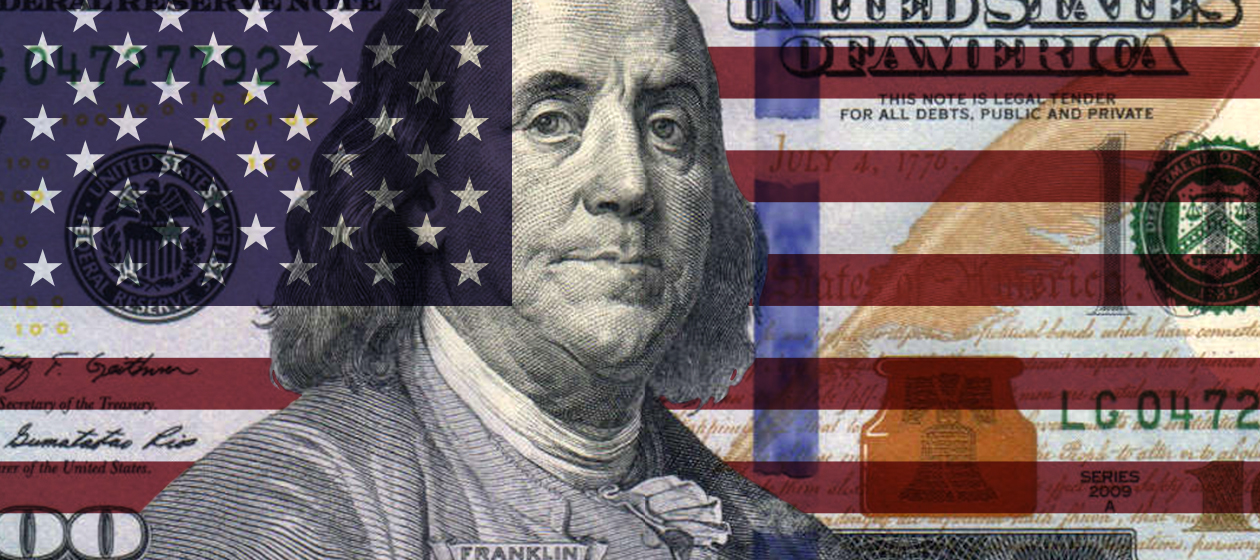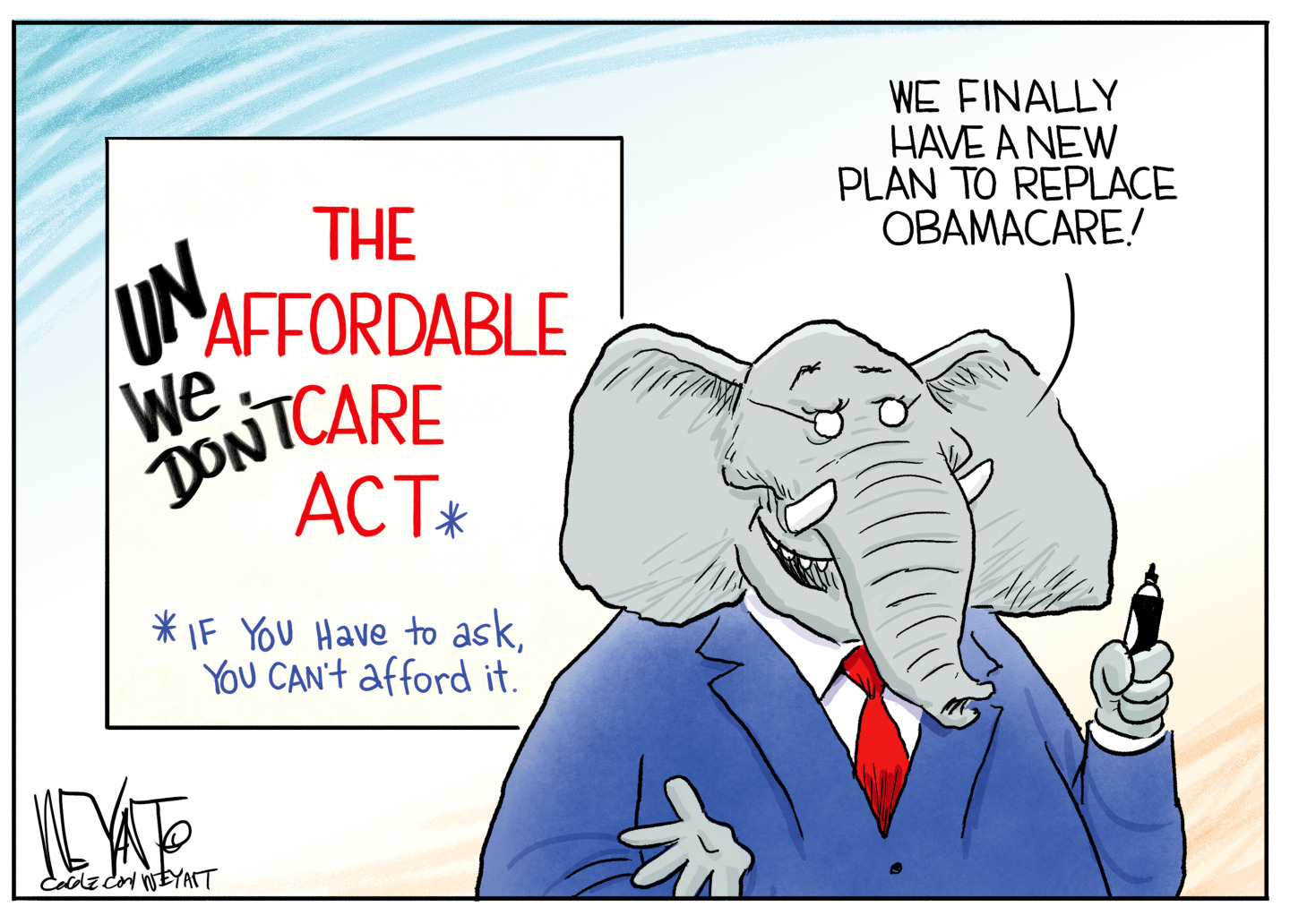America is going to pay a lot of interest soon. But don't fear a debt crisis.
Here's the real problem


Between tax cuts and new spending, the U.S. government's total debt load is set to balloon from just under 80 percent of the economy right now to just under 100 percent in a decade. Meanwhile, as the economy recovers, the Fed is gradually raising interest rates.
The combined result? The federal government paid $263 billion in interest in 2017, but that will swell to $915 billion in 2028. That will be 13 percent of all federal spending — more than Medicaid or even the military.
That sounds scary. And it could indeed be a bit of a problem — just not in the way most people think.
The Week
Escape your echo chamber. Get the facts behind the news, plus analysis from multiple perspectives.

Sign up for The Week's Free Newsletters
From our morning news briefing to a weekly Good News Newsletter, get the best of The Week delivered directly to your inbox.
From our morning news briefing to a weekly Good News Newsletter, get the best of The Week delivered directly to your inbox.
The standard argument you hear is that federal interest payments will crowd out other priorities in the national budget. "The heavy burden of interest payments could make it harder for the government to repair aging infrastructure or take on other big new projects," warned The New York Times. The paper even suggested the interest burden could force the government to cut spending and raise taxes in the next recession, despite the economy needing additional stimulus to recover. "There will eventually be another recession, and this increases the chances we will have to slam on the brakes when the car is already going too slowly," Jeffrey Frankel, a Harvard economist, told the Times.
It's difficult to overemphasize how utterly wrong this is.
The U.S. government controls the supply of U.S. dollars. While private households, businesses, or even state and local governments must bring in dollars before they can spend them, the federal government must spend dollars before it can tax them. This is more intuitive than it sounds. Since the government literally prints dollars for circulation, it must provide money before it can take it back. (If you don't believe me, here's former New York Federal Reserve Chairman Beardsley Ruml, making the same point way back in 1946.) When one line item in the federal budget grows, it doesn't "crowd out" other priorities because the government can never run out of dollars.
"But what about inflation?" you might ask. That is the proper question: The inflation level, not the risk of a debt crisis, is what actually determines the government's room to spend on public priorities. When inflationary pressure is too great, the U.S. can relieve it by raising taxes or hiking interest rates to remove money from the economy.
A free daily email with the biggest news stories of the day – and the best features from TheWeek.com
But simply introducing new dollars into the economy does not necessarily lead to price increases. Where the money goes is crucial. To create inflation, new dollars must go into new spending and consumer demand. Interest payments on the national debt are extremely unlikely to do that.
The key thing to understand here is that most U.S. government debt is denominated in treasury bonds, which are pretty much the most liquid asset in the world. If you own a treasury bond, but you'd rather have cash, you will have no trouble finding a buyer. That means pretty much anyone who owns a treasury bond prefers it to cash because they're looking to save it. And since owning a treasury bond is the prerequisite for receiving federal interest payments, people are almost certainly going to save those payments as well.
About 42 percent of all treasury bonds are owned by foreign governments or foreign investors, as reserve funds in case of a foreign exchange emergency. Another 23 percent are held by state and local governments, again as savings funds, or by the Federal Reserve, which literally remits all its earnings above operating costs right back to the Treasury Department. Another 7 percent of treasury bonds are held by financial and insurance firms, and the remaining 28 percent are in personal investment portfolios and the like. In other words, the vast majority of treasury bonds are owned for institutional purposes to hedge against risk, not as a source of supplementary income to spend in the economy.
To the extent that treasury bonds do function as a form of personal wealth, it's important to note that the vast majority of wealth is owned by the very richest Americans, even after you account for 401(k)s and retirement portfolios. Being rich, they're much less likely to spend the additional money as consumption and much more likely to save it.
None of which is to say federal interest payments are never spent and thus never add to inflation, just that the effect is likely marginal.
So how does this connect to the way recessions are fought?
Well, recessions by nature are deflationary events; they open up the room the government needs to stimulate the economy back to health. That's why Frankel's warning that interest payments could shackle the federal response to another recession is so off base.
But don't assume federal interest payments are utterly benign. They'll never wreck the federal budget, but they could cause another problem. Namely, that $915 billion in 2028 will basically be free money the government is handing out, either to foreign governments, corporations, or to wealthy individuals. If nothing else, that will worsen wealth inequality. Giving the wealthy more extra money to play with could also lead them to do stupid things, like inflating bubbles in stocks, housing, or rickety corporate debt.
The clear and present danger of wealth inequality — not the specter of a government debt crisis — is what should really worry lawmakers.
Jeff Spross was the economics and business correspondent at TheWeek.com. He was previously a reporter at ThinkProgress.
-
 A luxury walking tour in Western Australia
A luxury walking tour in Western AustraliaThe Week Recommends Walk through an ‘ancient forest’ and listen to the ‘gentle hushing’ of the upper canopy
-
 What Nick Fuentes and the Groypers want
What Nick Fuentes and the Groypers wantThe Explainer White supremacism has a new face in the US: a clean-cut 27-year-old with a vast social media following
-
 5 highly amusing cartoons about rising health insurance premiums
5 highly amusing cartoons about rising health insurance premiumsCartoon Artists take on the ACA, Christmas road hazards, and more
